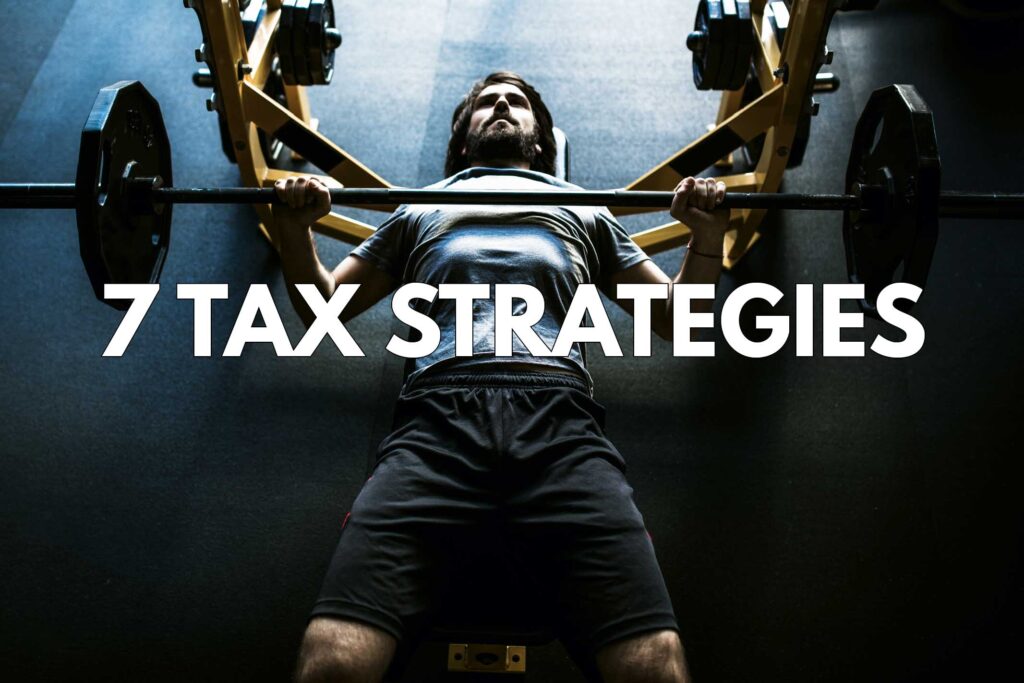By John Franklin, Two-Brain chief marketing officer
Taxes might not be anyone’s favorite topic, but they’re unavoidable.
Over the years, I’ve spent a small fortune on certified public accountants and tax consultants to learn strategies that actually work.
The good news? These lessons can help you save money and set your gym up for long-term success.
While the strategies below are written from a U.S. perspective, they apply globally with minor variations. If you aren’t in the U.S., check your local tax codes to see how each concept applies in your area.
Let’s dive in.
1. Don’t Wait Until Tax Time to Fix Your Books
Waiting until April or your fiscal year end to clean up your books is a recipe for disaster. I have trouble remembering what I ate for breakfast, much less what I spent money on a year ago.
Don’t rely on your bookkeeper and tools like QuickBooks to get everything right. Many firms outsource to overseas bookkeepers who lean heavily on QuickBooks’ suggested categorizations—which are often wrong. One firm I hired even misclassified its own service.
At Two-Brain, we recommend gym owners use the 4/9ths Model:
- 44 percent of gross revenue goes to staff wages.
- 22 percent goes to other expenses.
- 33 percent is profit.
Misclassified expenses can throw this balance off, leaving you unsure whether you’re overpaying staff, underspending on marketing or missing your net owner benefit target.
Keeping accurate, up-to-date books isn’t just a good tax strategy—it’s essential for making sound business decisions.
Here’s more info on increasing your earnings from your business:
2. Get a Tax Estimate
An estimate is one of the easiest ways to stay ahead of tax season.
For a small fee (usually $300-$500), a certified public accountant (CPA) can calculate your expected tax liability based on your year-to-date income.
Knowing what you owe ahead of time allows you to plan an effective tax strategy. You’ll also avoid scrambling for cash when the tax bill is due. The last thing you want is to hit the payment deadline and realize you owe $10,000 you don’t have.
Spending a little on a tax estimate now can save you from a big headache later.
3. Don’t Waste a Dollar to Save 35 Cents
It’s tempting to buy things you don’t need to “save on taxes,” but spending $1 to save 35 cents still wastes 65 cents.
Example: “You have a profit of $5,000. Why not spend that on new gear so you don’t have to pay as much tax?”
Here’s why: You probably don’t need that new gear, and “spending to save” is really just spending.
Taxes aren’t the enemy—they’re a sign your business is profitable. While mitigating your tax bill is important, avoiding taxes entirely isn’t realistic. If you plan on building real wealth, you’ll eventually have to face the tax monster.
Make a profit, pay your taxes and put something away for a rainy day.
4. Hire Your Kids
If your kids are old enough to help at the gym, put them to work. Paying them for legitimate tasks such as cleaning or managing social media can reduce your taxable income while teaching them responsibility.
You can pay each child up to $14,599 before they owe federal taxes or need to file a tax return. For two kids, that’s $29,198 in deductions, saving you $7,007 if you’re in the 24 percent tax bracket. If your kids are young, you can open a custodial account and invest the money for them.
This strategy is great for higher-earning gym owners and doubles as a way to pass wealth on to your children.
5. Use Bonus Depreciation
If you’ve bought new gym equipment recently—like Rogue Echo Bikes or Concept2 rowers—you can deduct 80 percent of the cost in the year of purchase. Even if you finance the equipment, you’re still eligible for bonus depreciation, and the interest on the financing is tax-deductible.
For example, if you spend $20,000 upgrading your rowers and bikes, you can deduct $16,000 in the first year. If you’re in the 24 percent tax bracket, that’s like getting a $3,840 discount in the form of tax savings.
Bonus depreciation is an easy way to save on taxes while reinvesting in your gym.
6. Max out a Retirement Account
Retirement accounts aren’t just about the future—they’re one of the best tools for saving on taxes today.
For gym owners without W2 employees, a one-participant 401(k)—sometimes called a “solo 401(k)”—or a simplified employee pension (SEP) IRA has a huge contribution limit, so you can shelter a lot of taxable income. If you have W2 employees, savings incentive match plan for employees (SIMPLE) IRAs or traditional 401(k)s might be more cost-effective options.
Most gym owners don’t think about retirement, but the time to start saving is always now. Your older self will thank you.
7. Open an HSA
If you’re on a high-deductible health plan, a Health Savings Account (HSA) is the most tax-advantaged account you can open. Contributions are tax-deductible, grow tax-free and can be withdrawn tax-free for medical expenses or when you’re 65. It’s a triple benefit that’s hard to beat.
If you contribute $8,300 (the family max for 2024), you save $2,070 in taxes in a 24 percent tax bracket while building a reserve for future medical needs.
An HSA is an easy way to save on taxes while planning for future health-care costs.
Bonus: Buy Another Gym
If you’re ready to expand, buying another gym offers serious tax advantages.
Let’s say you buy a gym for $300,000, it has $100,000 in equipment, and it generates $75,000 in annual net owner benefit.
You can likely finance the purchase of a gym like this through the SBA with as little as 10 percent down, meaning your out-of-pocket cost is only $30,000.
You can claim bonus depreciation the year you buy the gym and deduct 80 percent of the market value of the equipment. In this case, that’s $80,000, saving you $19,200 if you’re in the 24 percent tax bracket.
And if the gym continues to generate $75,000 in annual net owner benefit, you also get an additional income stream.
Buying another gym can grow your business, shelter income and create new cash-flow opportunities with minimal upfront investment. Win-win-win.
Need More Help?
Don’t let taxes overwhelm you.
With a solid plan, you can save thousands and set your gym up for success.
Not sure where to begin? Talk with a Two-Brain mentor today.
A mentor can provide detailed strategies to help you build a profitable business, earn what you want to earn, minimize taxation and create generational wealth for your family.

